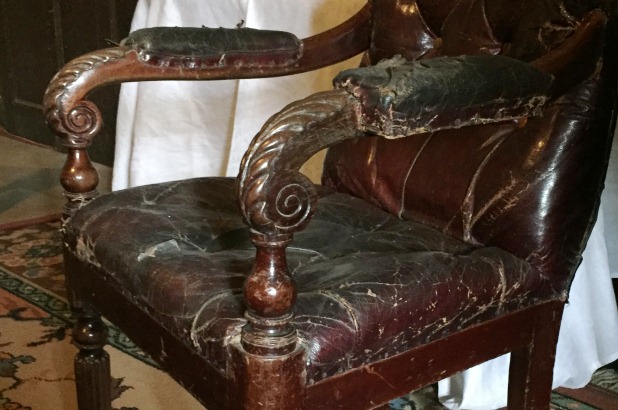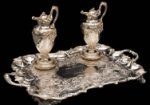At Rouse Hill House appearances can be deceptive, especially in this tale of a dining chair.
If you look carefully there are seven chairs in this photo of the schoolroom at Rouse Hill House – and in five different styles! What we’re looking at today are the two tucked behind the television and in the window bay at left:
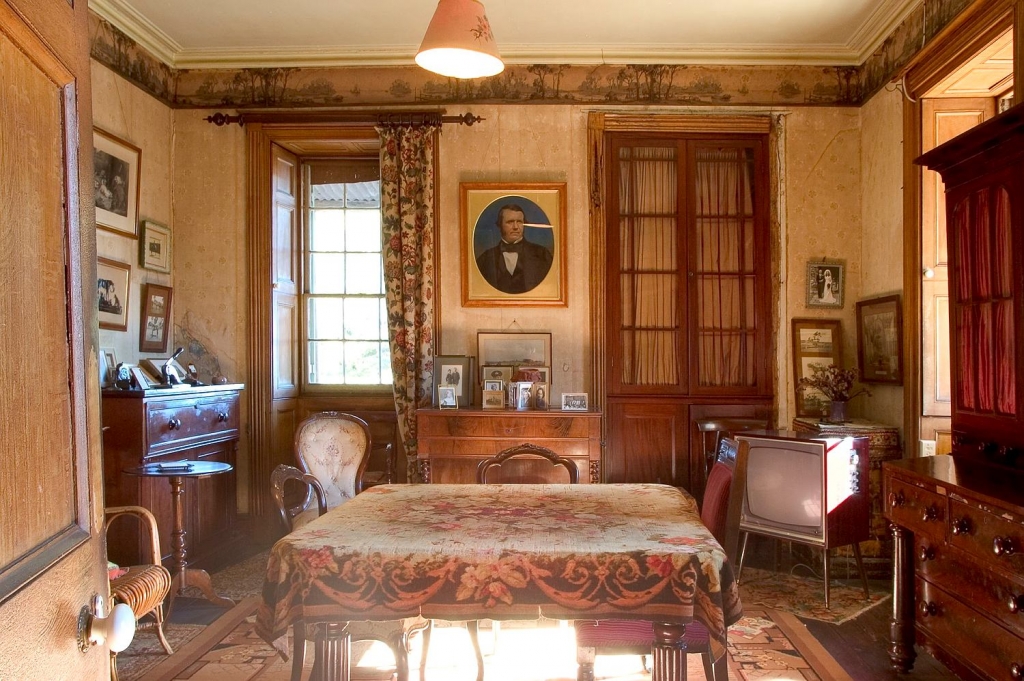
The schoolroom at Rouse Hill House. Photo (c) Jenni Carter Sydney Living Museums
They date to quite early in the house’s history, dated approximately 1830, and may actually be from the original, late Regency-style dining suite along with the house’s significant D-end table. They are cedar, shovel-backed, the straight front leg is reeded with a sabre-leg behind, with a neoclassical detail to the cross-bar and a woven seat:
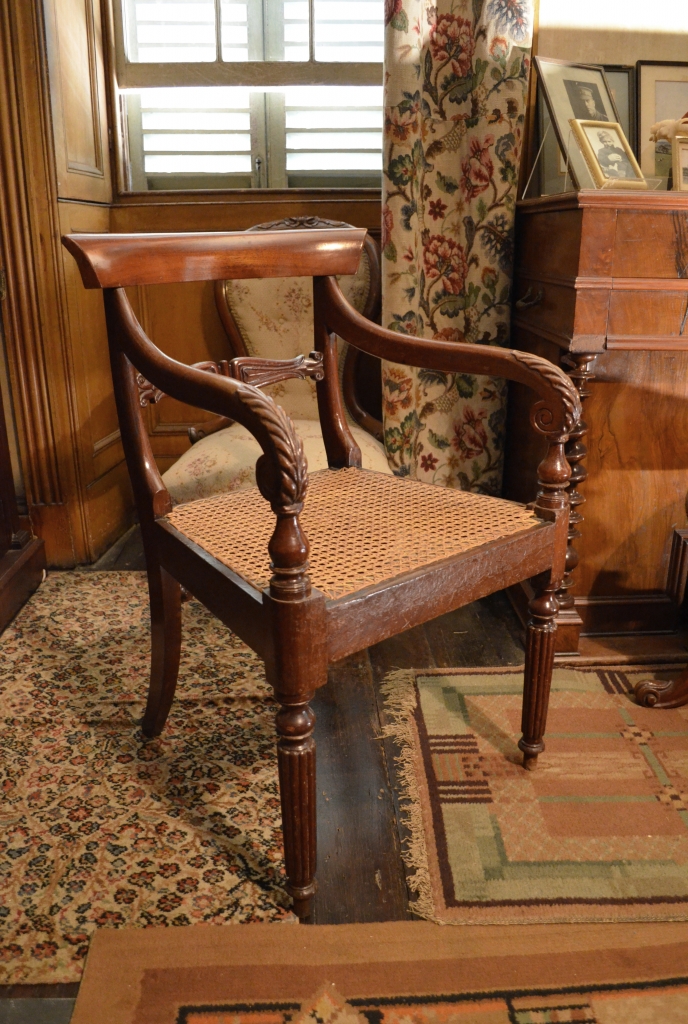
Dining chair in the schoolroom. Photo (c) Scott Hill for Sydney Living Museums
When Edwin Stephen and Bessie Rouse hosted the Sydney Hunt Club at a lunch in the arcade at Rouse Hill in 1895, a photograph of the set-up shows one of the single chairs at the end closest to the viewer:
Photograph of the Hunt Lunch held at Rouse Hill House 18 July 1895. Unknown photographer. Rouse Hill House collection, Sydney Living Museums
And that’s where it gets more complex, because in the nearby dining room is another later, and larger, set of chairs:
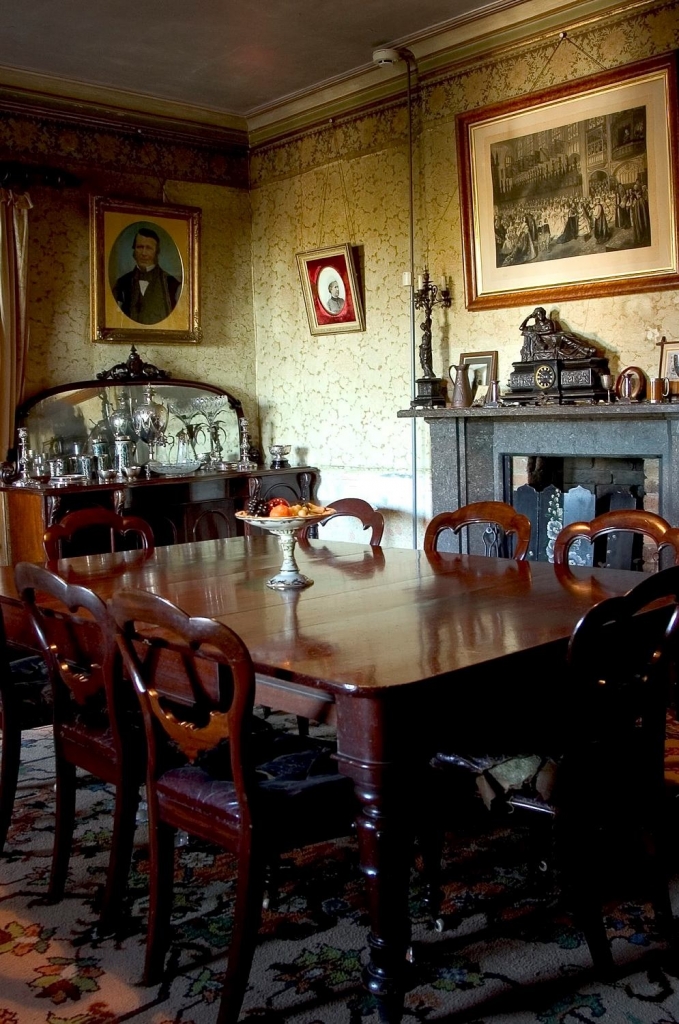
The dining room at Rouse Hill House. Photo (c) Jenni Carter for Sydney Living Museums
In total here are 11 mahogany, balloon-backed chairs, each with a padded and deeply buttoned leather seat, and one carver chair with its arms, to be placed at the head. Most live against the walls (two that are a bit worse for wear have long been retired to storage elsewhere in the house), to be brought out when the table was fully extended. And that’s where can we paraphrase that old song from Sesame Street because (everybody sing!):
Nine of these chairs belong together,
Nine of these chairs are kind of the same,
Can you guess which chair just doesn’t belong here?
Now it’s time to play our game (time to play our game).
One of these chairs is doing their own thing..
You have to look very closely to work out that something very odd is going on with the carver chair. What you would probably notice first is that the profile of the back of the chair and the front legs don’t match:
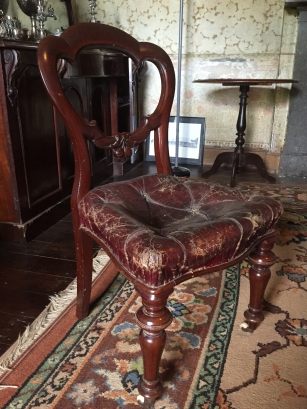
Single dining chair in the dining room at Rouse Hill House. Photo (c) Scott Hill for Sydney Living Museums
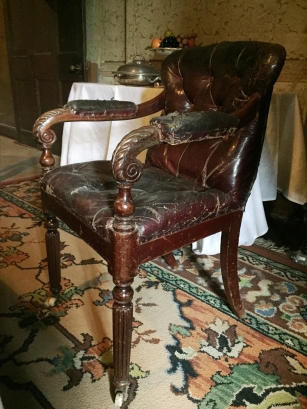
Carver chair in the dining room at Rouse Hill House. Photo (c) Scott Hill for Sydney Living Museums
And that’s the giveaway: ostensibly part of the 1870s mahogany set the carver chair is actually the pair of the much earlier cedar carver in the other room. If you turn it over you can see what’s happened:
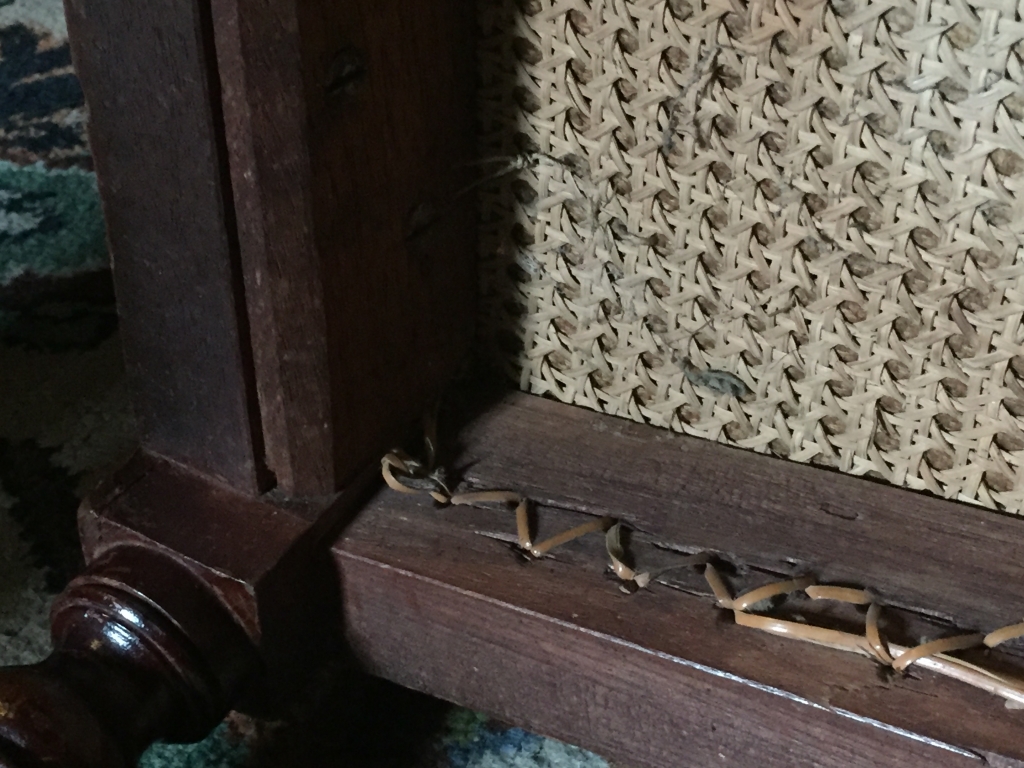
Underside of the carver chair_Photo (c) Scott Hill for Sydney Living Museums
Preserved under the later, thickly padded leather seat is the original 1830s woven cane-work. A peak under the arm also shows how a simple piece of wood has been attached to the carved arm of the older chair, and then also padded with the dark red-brown leather:
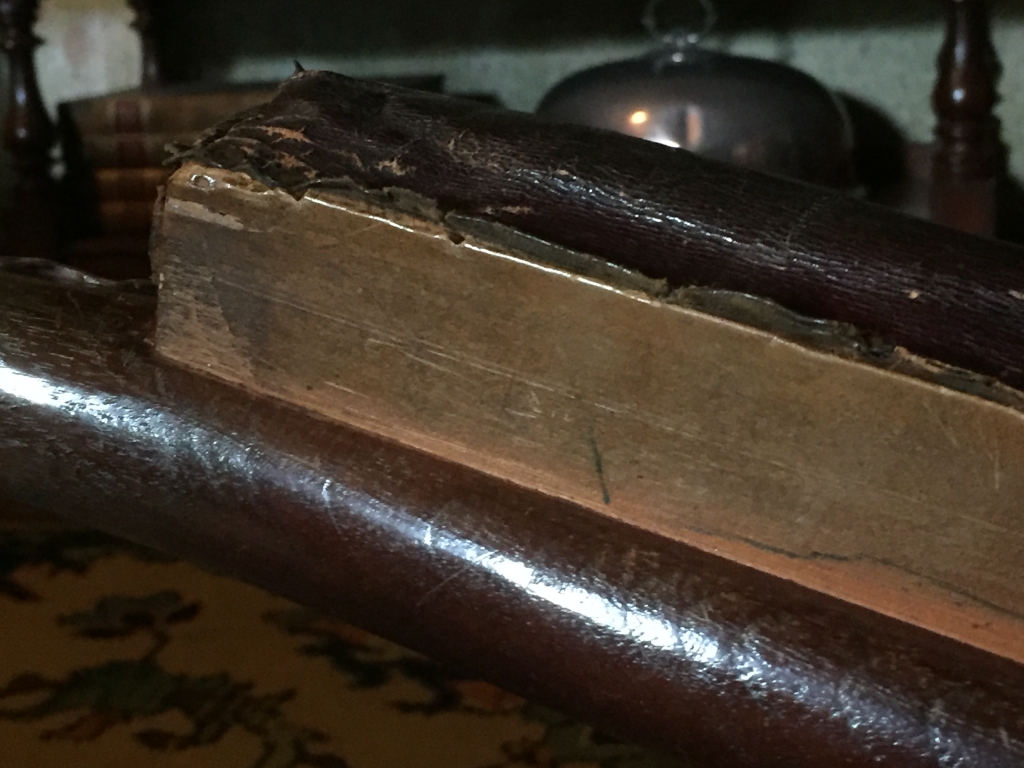
Underside of the carver chair arm_Photo (c) Scott Hill for Sydney Living Museums
When the two are placed side by side it even more obvious, as the acanthus decoration on the scroll-ended arm can also be seen:
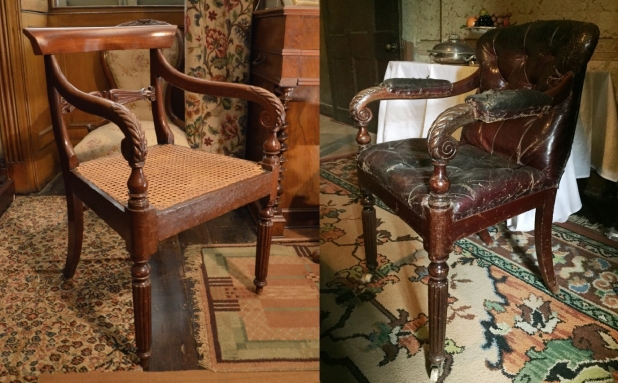
Comparison of two chairs from Rouse Hill House. Rouse Hill House collection, Sydney Living Museums
It seems that when the larger mahogany set was acquired in the late 1860s along with the dining table a carver chair (or chairs, as one at the head and foot was the standard) was not ordered, and that one from the older set was instead given a fairly radical makeover.
It follows a long established tradition of recycling and adaptation in this rural house and estate, a tradition seen in fences, the structure of buildings and, though not always apparent, in the furniture itself.
